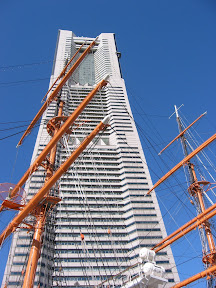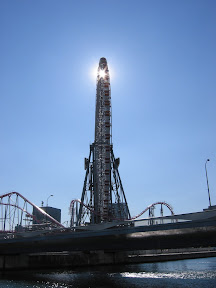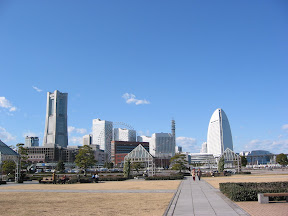The Japanese secret to long life
Friday, March 4th, 2005If Japan is really the land of long life that the statistics claim it to be, then the logic behind these facts got lost on me somewhere between the office and the cigarette vending machine. This is the land of workaholics and chain smoking. These two habits go together I suppose. Bed to work, work to bed, butt to butt. That makes sense. But what still puzzles me is how these people live so long. Smoking and hard work aren’t new Japanese customs, yet they keep ticking away with the highest life expectancies. If 70% of the men and 40% of the women are smokers, then something else must be contributing to this longevity.
Could it be drinking, I think hopefully? Could the secret to long life lie in the perfect combination of rice, raw fish, barley, and hops? I’ve discovered that this may actually play a part in the explanation. It’s all about genetics, so my German-Irish ass is out of luck. Japanese people descended from an ancient group of Mongolian Mormons, leaving roughly 40% of the current population as complete lightweights. I’ve seen fully grown Japanese guys get goofy on a beer, stumbling on three, and completely knockered on four. It’s quite entertaining, easy on the wallet and the liver too! This must be why beer here is so expensive. It’s hard to make your way as a bartender with folks drinking at this rate.
Drinking, smoking, and working aside, it all boils down to diet. If you want to live a long time, don’t eat a lot of red meat, get your carbs from an unprocessed source like rice, get your protein from fish and soy, and don’t eat too much. Yes folks trade in your barbecues for rice cookers, go catch a big salmon and just take a bite! Why wait to get home? Rethink your next indulgent night out to the Outback Steak House. Buy a carton of cigarettes instead and take on a second job. Your stress level is probably too low to really live a long time. Seriously though, I’m completely baffled by the working and smoking. Maybe if they relaxed the workload and gave up smoking they’d all be living to 90? Who knows? Sometimes I feel like I’m living in a country of smoking robots, every one on their way to work or the bar, but never home. And if they want, they can keep doing this every day until they’re eighty.





